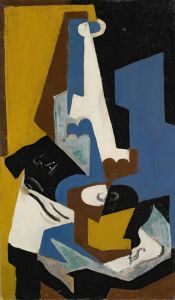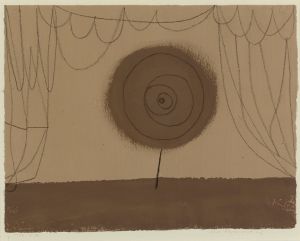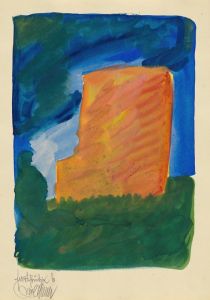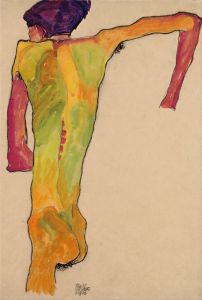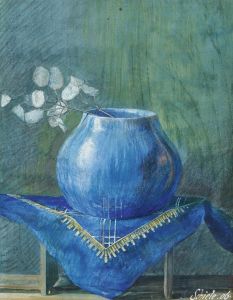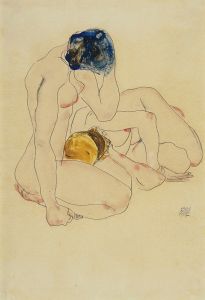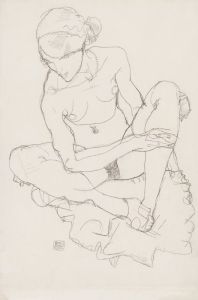
Stillleben mit Kerzenleuchter, Vase und Maske
A hand-painted replica of Egon Schiele’s masterpiece Stillleben mit Kerzenleuchter, Vase und Maske, meticulously crafted by professional artists to capture the true essence of the original. Each piece is created with museum-quality canvas and rare mineral pigments, carefully painted by experienced artists with delicate brushstrokes and rich, layered colors to perfectly recreate the texture of the original artwork. Unlike machine-printed reproductions, this hand-painted version brings the painting to life, infused with the artist’s emotions and skill in every stroke. Whether for personal collection or home decoration, it instantly elevates the artistic atmosphere of any space.
Egon Schiele, an Austrian painter known for his distinctive style and contribution to early 20th-century art, created the work titled "Stillleben mit Kerzenleuchter, Vase und Maske" (translated as "Still Life with Candlestick, Vase, and Mask"). Schiele was a protégé of Gustav Klimt and a major figure in the Expressionist movement, recognized for his intense and often provocative imagery.
"Stillleben mit Kerzenleuchter, Vase und Maske" is a still life painting, a genre that Schiele explored alongside his more famous figurative works. This painting exemplifies Schiele's ability to infuse everyday objects with a sense of drama and psychological depth. The composition typically includes a candlestick, a vase, and a mask, arranged in a manner that reflects Schiele's interest in form, color, and the emotional resonance of objects.
Schiele's still lifes often feature a stark and somewhat unsettling atmosphere, achieved through his use of bold lines and a limited color palette. In this painting, the objects are likely rendered with a focus on their contours and shadows, creating a sense of tension and highlighting the interplay between light and dark. The candlestick, vase, and mask are not merely decorative elements; they are imbued with symbolic meaning, a common characteristic of Schiele's work.
The mask, in particular, may suggest themes of identity and concealment, which are recurrent in Schiele's oeuvre. Masks can represent the duality of human nature, the hidden versus the revealed self, a concept that Schiele explored in various forms throughout his career. The inclusion of a candlestick could symbolize transience or the passage of time, while the vase might be associated with beauty or fragility.
Schiele's approach to still life was innovative for his time, as he applied the same expressive techniques he used in his portraits and figure studies. His works are marked by a raw, almost visceral quality, which is evident in the way he depicted objects with an emotional intensity that was unusual for still life painting. This intensity is part of what makes Schiele's still lifes stand out within the broader context of early 20th-century art.
Egon Schiele's career was tragically short; he died in 1918 at the age of 28 during the Spanish flu pandemic. Despite his brief life, Schiele left behind a significant body of work that continues to be celebrated for its emotional depth and innovative style. "Stillleben mit Kerzenleuchter, Vase und Maske" is a testament to Schiele's ability to transform ordinary objects into powerful expressions of human experience.
While specific details about the creation and current location of "Stillleben mit Kerzenleuchter, Vase und Maske" might not be extensively documented, the painting remains an important part of Schiele's exploration of still life as a means of conveying complex psychological themes. His work continues to be studied and appreciated for its contribution to the development of modern art.





